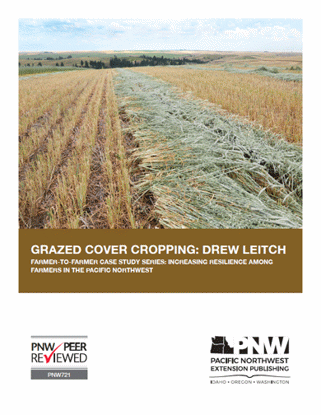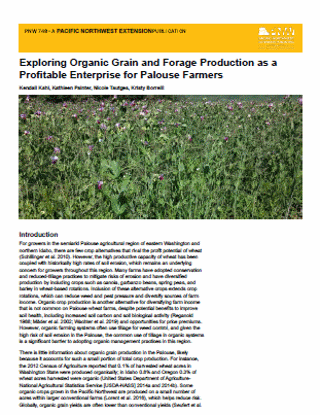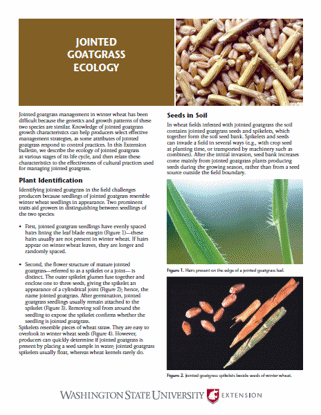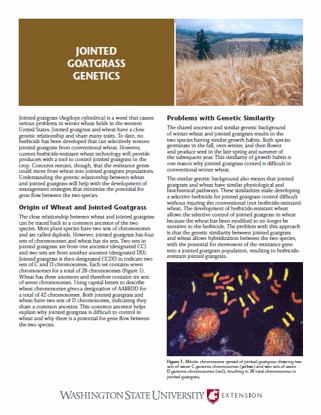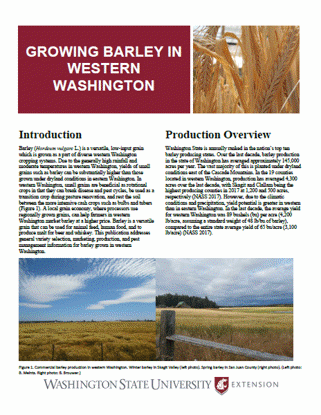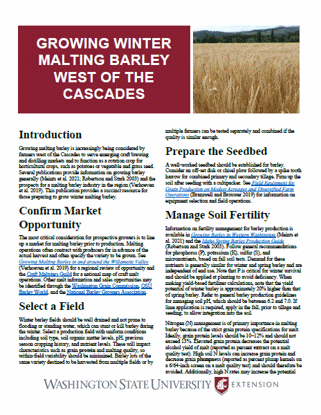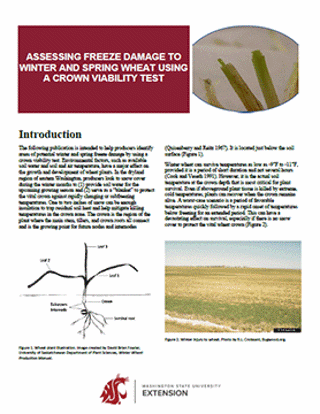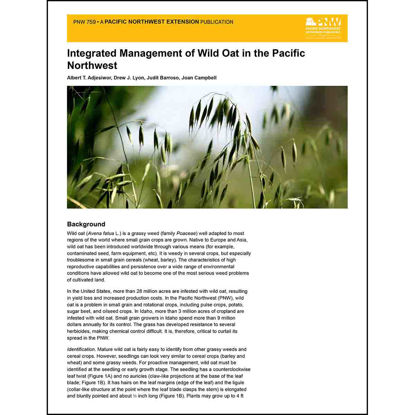You have no items in your shopping cart.
Small Grains
Small Grains
Grazed Cover Cropping, Drew Leitch (Farmer to Farmer Case Study Series)
An Inland Northwest farmer has been trialing spring and fall-seeded cover cropping for cow-calf grazing and the effects on the following grain crops.
$0.00
Exploring Organic Grain and Forage Production as a Profitable Enterprise for Palouse Farmers
Demand for organic grain has outpaced actual US grain production in recent years. Yet little is known about organic grain production in the Palouse, likely because it comprises a small portion of total crop production. This study takes a closer look. It examines crop productivity under reduced-tillage conditions, provides estimates of field-scale costs, determines the benefits of crop rotation, and describes the principal factors that determine profitability within cropping systems. The verdict: organic grain and forage production can be a profitable niche enterprise within a traditional Palouse nonorganic wheat farm.
$0.00
Jointed Goatgrass Ecology
In this Extension bulletin, we describe the ecology of jointed goatgrass at various stages of its life cycle, and then relate these characteristics to the effectiveness of cultural practices used for managing jointed goatgrass.
$0.00
Jointed Goatgrass Genetics
Jointed goatgrass and wheat have a close genetic relationship and share many traits. Understanding the genetic relationship between wheat
and jointed goatgrass will help with the development of management strategies. Current herbicide-resistant wheat technology will provide
producers with a tool to control jointed goatgrass in the crop.
$0.00
Growing Barley in Western Washington
Versatile and low-input, barley can be used for food, malt, or animal feed: find out here if barley could work as a rotational crop on your farm.
$0.00
Growing Winter Malting Barley West of the Cascades
Thinking about growing winter malting barley? This pub will help you to get started, providing an overview of must-know tips and information.
$0.00
Assessing Freeze Damage to Winter and Spring Wheat Using a Crown Viability Test
Follow the nine simple steps outlined in this pub to conduct a successful crown viability test on your winter and spring wheat.
$0.00
Integrated Management of Wild Oat in the Pacific Northwest
In the Pacific Northwest (PNW), wild oat has become a notable weed pest of small grain and rotational crops, including pulse crops, potato, sugar beet, and oilseed crops. It has infested more than 3 million acres of cropland in Idaho, costing small grain growers in the state alone more than 9 million dollars annually in control costs. Feeding its spread is the fact that it has developed resistance to several herbicides. This PNW provides all the basics you need to mount a defense against the stubborn grass, including its identification, crop impacts, and management strategies. A handy table also lists the brand-name herbicides to which the wild oat has developed resistance, upping the odds on your control efforts.
Authors: Albert T. Adjesiwor, Drew J. Lyon, Judit Barroso, Joan Campbell
$0.00

